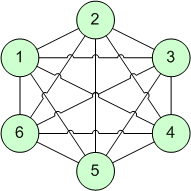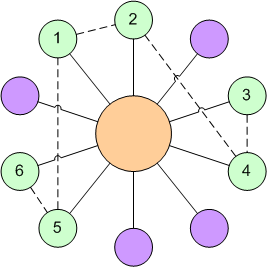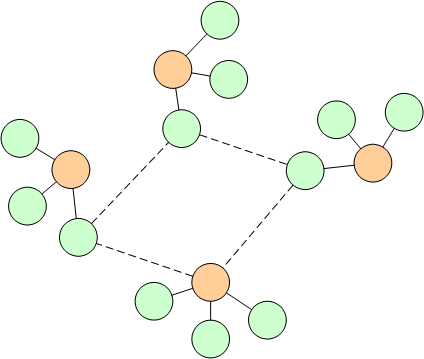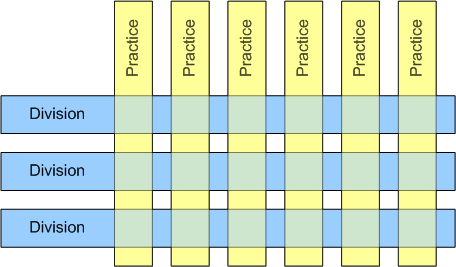Many of my colleagues have been posting about the pros and cons of a virtual organisation (Graeme and Kim) and I’ve wanted to chime in with my perspective on the whole issue.
When I joined Readify over three years ago I thought that I was just joining another consulting services company and didn’t really envisage the company turning into what it is today. Back then there weren’t too many of us running around the place and it was relatively easy to share knowledge and experience with each other.
Our primary tools back then were e-mail and mobile phone, although most people were also contactable via instant messenger for when we needed a midnight converstation about some technical subject (its much more polite to message someone rather than phone them and risk waking up the other inhabitants of the house).
In essence our knowledge-base was locked away in the heads of individuals and we relied on high-bandwidth interconnects between the nodes to distribute information. Diagramatically it looked something like this:

As an organisation grows the above knowledge management architecture begins to struggle because its too hard for each node to index the knowledge that the other nodes own. This started to happen to us not long after I joined and at some point an internal distribution list was created to help share the knowledge around.
To be honest the true function of the distribution list was serve as a knowledge index replication system where nodes over a period of time could come to understand which node was an expert in any given subject.
While this may appear to solve most of the knowledge management problems, you may find that if you implement this architecture in your organisation nodes will begin to self optimise their communications with other nodes and revert to one-to-one connections.
The net effect is that the knowledge index replication system breaks down and eventually the new nodes that you add to the network are essentially blind. Diagramatically it looks something like this:

Although weren’t necessarily thinking in those terms, we tried to tackle the dead/blind-node problem by archiving every post to the internal distribution list into a public folder that could then be searched. Unfortunately the volume of messages mean that it didn’t make for a great user experience.
At Readify this problem was exacerbated by the level of growth we were experiencing and necessity has really forced us to attempt to find a solution. If we were a bricks and mortar organisation this level of growth would have actually presented a “solution” to us already by creating regional offices where regional leads communicate with other regional leads to share knowledge.
The problem is this assumes that the connector nodes are efficient distributors of knowledge but what almost always happens in this model is that the regional lead becomes more management focused and so the bulk of the technical knowledge exchange is lost in transit.

Its easy to produce this silo effect in a virtual organisation as well by creating multiple distribution lists and making them all so low volume that no one actually trusts them to reach the audience that they intended. Eventually the system ends up breaking down and random interconnects between nodes get established only this time the network is impossible to map.
So how are we tackling this one at Readify? While its still a work in progress we are attempting to establish a content-rich intranet which captures our collective experience as an organisation. We are encouraging individuals to create sites on top of SharePoint Portal Server and we’ve actually taken the default SPS installation and mapped its structure to our organisation.
I am already storing artefacts from consulting engagements, meetings and personal pet projects and this information is now searchable by anyone within the business. When content is created we publish it from the site to the portal into specific areas.
Internally we recognise six distinct practices and three business divisions which straddle them, this produces a lattice effect that we can lay out content out onto so that should we want to navigate to a particular area we can.

The idea is that business content will most likely be associated with divisional areas within the portal and will span multiple practices. Technical information tends to exist within one or two practices at most and sits nicely in that vertical (although their may be sub-areas within them).
Finally we have integrated our exchange public folders with SharePoint so those valuable discussions that get kicked off in our inboxes also get recorded – I’ve already found this feature particularly useful!
So this our approach to knowledge management as a virtual organisation. It is all a bit of an experiement really and it’ll be interesting to see what works and what doesn’t. Naturally we will use our internal experience to guide our clients that are tackling the same problems.